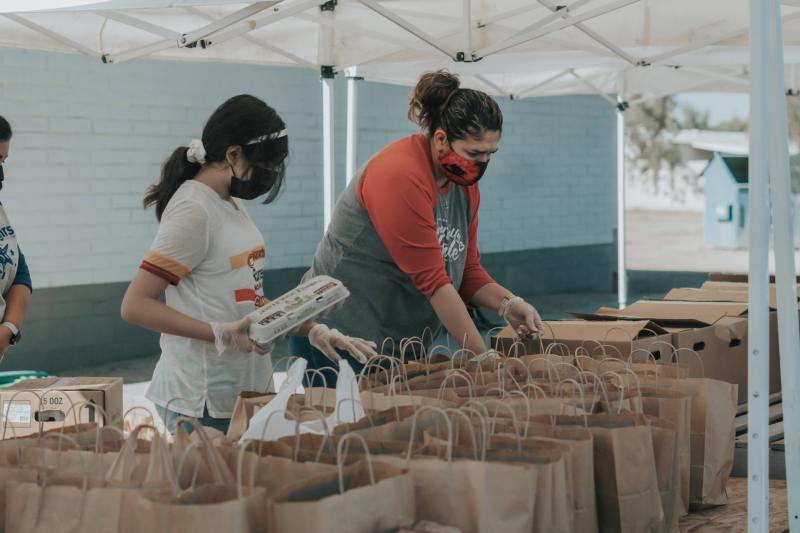With all of the sentimental movies, cheesily addicting music, and glittering good cheer in the air this time of year, people often transform into the best versions of themselves. Sure, the best version may sometimes come with a tacky reindeer sweatshirt or obnoxiously noisy jingle-belled earrings, but those are small prices to pay for the overall goodwill and holly jolly spirit of December. One of the ways this holiday happiness manifests itself is through the generosity of giving. Between Thanksgiving and the New Year, many are overcome with the desire to be charitable, which is a beautiful thing. Food banks and homeless shelters are often more full of volunteers than they can use, and there’s something very touching about that. The problem, though, is that, much like our New Year’s resolutions, those volunteers and generous donations seem to vanish come late January. The stacked boxes of canned goods and lines of eager helpers dissipate quickly once the Christmas lights come down.
Usually, by the time April rolls around, those same shelters and food banks are running low on the bounty brought in by December’s spirit of giving. Of course, that doesn’t mean that the charity of Christmastime benevolence and generosity should end — far from it! Naturally, this time of year is just as important as any to help and give of ourselves as much as we can. But while our first thought is to help feed and clothe those in need during the colder winter months, we sometimes forget other factors that may cause someone to need an extra boost during the rest of the year. In the summertime, for example, many families struggle to put food on the table at a time when their children aren’t receiving free school lunches. Summer is also hurricane season in many parts of the country, which puts thousands in need of extra help every year.

Of course, it’s selfless and beautiful to give of one’s time, but simple monetary donations are always needed as well. Food banks and other charitable organizations are often able to stretch money further, getting 20 cans of soup for what someone pays at a store for five. So your financial donation is actually making a bigger impact than you realize.
Rick Cohen, Chief Communications Officer/Chief Operating Officer at the National Council of Nonprofits, told us, “Someone who is hungry in April can’t wait for a donation in December. If you know you want to support a cause like a food pantry, rather than waiting and making a $100 donation in December, consider giving a $10 monthly gift. At the end of the year, you’ve actually given more ($120), but it’s a lot easier to find that $10 each month than the $100 all at once. Even better, it sustains the organization throughout the year so it can meet community needs as they come up.” Many organizations make it easy to donate by offering a recurring donation plan that can link to a bank or credit card account. Basically just like your Netflix subscription, but a lot better.
If you do find yourself wanting to really get in and donate, or your workplace, neighborhood, or church is organizing a holiday food donation drive, there are some items many shelters have constant need of. If you’re curious, simply Googling “food donation near me” will give you a list of places and items to give.
- Canned goods are always appreciated. More specifically, canned meats and other proteins will go far in meal preparation.
- Dried goods like pastas and beans that have long shelf lives are very useful as well.
Keep convenience in mind, too. For example, cans with a pop-top lid are much easier and faster than those that require a can opener. It’s also smart to keep transportation in mind. Glass jars or bottles may break and cause a mess, so metal or plastic is usually a safer choice.
Depending on where you give, many shelters need non-food items as well. Toiletries like travel-sized shampoo, soap, toothpaste, tampons, and deodorant are always happily received and in high demand. And obviously, these products will last longer than most food items.
When it comes to giving, it’s hard to go wrong. Whether it be December or July, your generosity and charitable heart are always much appreciated, to be sure. But this Christmas season, consider doing something a little bit out of the ordinary. Arrange a recurring donation to your local food bank. Set up a calendar event in your phone, reminding you to donate dried pasta on a random day in August next year. Instead of cleaning out your pantry, clean out the toothpaste section of the Dollar Store and drop it off at the nearest Salvation Army. And of course, as always, take a cue from Dickens’s A Christmas Carol, and “… honor Christmas in my heart, and try to keep it all the year.”



